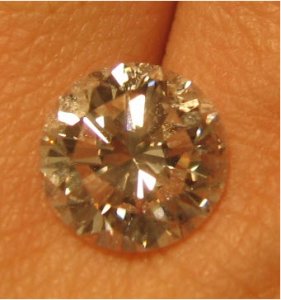- Joined
- Jun 29, 2008
- Messages
- 10,261
Garry - thank you. Is it possible to guestimate what percentage of diamonds will have had some form of painting/digging? Is this common or reasonably rare - or somewhere in between please?Date: 11/25/2009 2:40:10 PM
Author: Garry H (Cut Nut)
For the benefit of many, here is an old photo - not sure where I got it.Date: 11/25/2009 1:52:22 PM
Author: Serg
Date: 11/25/2009 10:28:24 AM
Author: John Pollard
Date: 11/25/2009 2:08:38 AM
Author: Serg
John, GIA article has completely wrong statements why cutters use Painting. GIA did wrong conclusions about connections between painting-digout and yield . GIA forgot consider rough surface . I doubt what this GIA article is good for consumer education, because it has misleading information in most critical points. ( for same reason GIA early gave wrong cut grade for diamonds as *
I like to give balanced representation, which is why I linked subject matter from GIA, AGSL and PS.
You''re right, the GIA piece is nearly 5 years old. You may remember that Brian Gavin and I reacted strongly when it came out, and worked heavily with both GIA and AGSL to produce the third piece I linked? Reading through the different articles I trust that intelligent readers will come to intelligent conclusions.
John,
1)GAI article has wrong statements about reason for painting . they forgot account what increasing girdle thickness in halves Usually demand to decrease diameter . So painting is not good way to increase yield. for other reason GIA statement about dig-out was wrong too
2) Peter Y. did not discuss about yield, but his statements about spread could easy create wrong understanding for consumers about yield for painting diamonds and cutter motivation. I hope you remember my and Janak discussion with Peter about connection between Yield and painting-digout.
3) I did not find in Brain article information how painting changes yield.
So I do not see balanced representation for painting in this 3 articles. first two create consumer scare-mondering about painting. ( however most consumer will not understand last 3 pages in Peter article)
Note how bruting demands that the stone be ground down until there is a clean line for the girdle.
It is why very often the girdle has a wave in it on scan maps so the diameter can be a little larger.
Sometimes painting or digging is done to enable a part of the unbruted rough to be polished out - generally this is localized. Sometimes it is done in one spot because there is an inclusion to remove.
Often when it is done all around the stone there is a desire to improve the stone or some reason we may never know.
Apologies as I really don''t want to threadjack or move off subject but this is incredibly fascinating and a wonderful learning tool.








300x240.png)